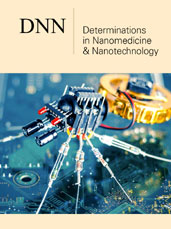Nanotechnology Waste: An
Ecotoxicology Risk? by Nkonyeasua Kingsley Egun* in Determinations in
Nanomedicine & Nanotechnology_ Journal of Nanotechnology

Abstract
The
word “Nano” is a prefix denoting 10-9m (a billionth of a meter) and the nanoscale usually refers to
structures with a length scale of 1-100 nanometers applicable to
nanotechnology. The idea of nanotechnology was presented far back as 1959 by
Richard Feynman, who stressed that materials can be formed by manipulating individual
atoms and anticipated the scientific transformation of the 21st century by
nanotechnology - a world of nanoscale products, processes, devices and machines
Hornyak [1] and Ozin et al. [2]. Over the years, Feynman’s predictions have
elicited interest from scientist, investors, corporations, Government and
policy makers, which have made nanotechnology a reality. The advantage of low
material usage and power requirement; unique functionality, modified physical
and chemical properties of nanoscale materials have seen their application and
usage in various aspects of human endeavours such as health and medication,
energy, agriculture, electronics, transportation, security, information and
communication technology Wilkinson [3]; Saini et al. [4]; Ramsden [5];
Campos-Cuerva et al. [6] and Ikhuoria [7].
As with science and new technology, the development of a novel scientific breakthrough creates along with it a new dimension of pollutants and toxins which may portend risk to human health and environment. Over the years, the World economic structure have seen the underdeveloped and developing nations been the final users in the life cycle of innovative technologies/products; thereby confronted with the environmental and human health risk associated with their decommissioning and disposal. In most cases, the damage has been done to human and environmental health before the hazard potentials of these materials are identified and protective actions taken. A typical example was the dumping of toxic waste in Koko community in Delta State, Nigeria in 1988. Similarly, the science and development of nanoscale materials and products will generate its own new dimension of pollutants and toxins; capable of causing ecological disruptions and implication on human health.
Therefore,
from an Ecotoxicologist
perspective, there is need for focused studies on identifying the stability of
nanoparticles in the environment; monitoring of generated waste in the
production of nano-materials; the human health risk and ecological disruptions
associated with the exposure to nano-materials at the end of their material
life cycle when they are discarded into the environment as waste. This is of
necessity in protecting the environment and human health of underdeveloped and
developing nations; which acquire new technology products after their half-life
cycle have been utilized in developed nations. And thereby confronted also with
the challenge of proper toxic waste handling and disposal.
https://crimsonpublishers.com/dnn/fulltext/DNN.000520.php
For more Open access journals
in Crimson Publishers,
Please click on the link: https://crimsonpublishers.com/
For more articles in Journal of Nanotechnology,
Please click on below link: https://crimsonpublishers.com/dnn/
Follow On Publons: https://publons.com/publisher/6342/crimson-publishers/
Follow On Linkedin: https://www.linkedin.com/company/crimsonpublishers/
High impact journals in Crimson
Publishers
https://www.quora.com/What-are-the-high-impact-journals-in-Crimson-Publishers



No comments:
Post a Comment